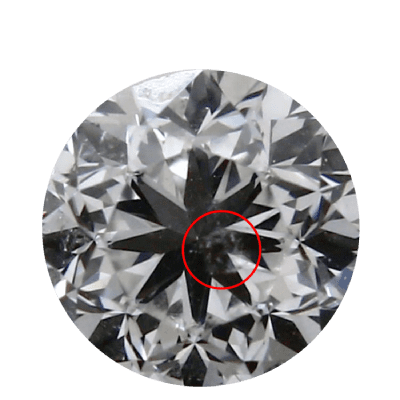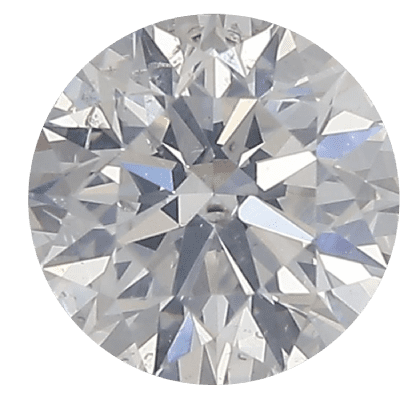
Cloud as represented on GIA plot
If you haven’t read through that general intro post on all this jazz, we suggest you read what are diamond inclusions article, so you can learn more about it. It will give you a little grounding on the whole topic before you launch fingers first into this intriguing post on ‘clouds’.
What is a Cloud in a diamond?
A cloud is basically a cluster of seriously tiny inclusions known as ‘pinpoints’ (read more about pinpoints here). On their own these pinpoints would be impossible to spot, but when they get together and party up close to one another, they can cause a ‘cloud’ to form.
It’s known as a cloud because it can often make the diamond appear hazy or fuzzy, like those days when the sun can’t quite blast through the dust and smoke in the air:

An inclusion will be called a cloud when there are three or more pinpoints huddled together in the same place (this is according to the GIA who are pretty much the authority on these things). Because these clouds cannot affect the overall durability of the stone (i.e. they will not multiply/expand over time, and will not cause the stone to crack or break), they should not be deal breakers. If the clarity grade on a diamond is a VS1 or above, any clouds will most likely not affect the optics of the diamond at all.
That being said, the more severe looking clouds can be a real bummer. Not only can they look like a gray blob inside the diamond, but they can also stop the light from bouncing around inside there, causing the diamond to look dull and lifeless. If a diamond has been given a lower clarity grade for example, the cloud could be the culprit. That will especially be the case if the cloud(s) are located at or near the table (top) of the diamond. This diamond is basically one big cloud, and it's turned milky:

Make sure that any clouds are transparent, and that the clouds themselves are not too dense. You also need to make sure that the cloud doesn’t take up more than one quarter of the diamond itself (no matter where the cloud is located in the stone). The less space taken up by clouds, the more light can bounce around in there giving you a sparkly diamond.

